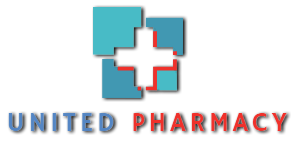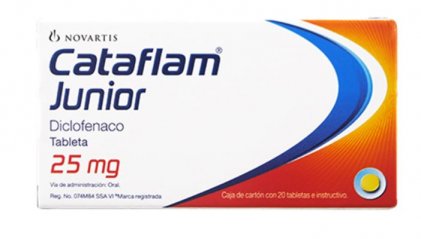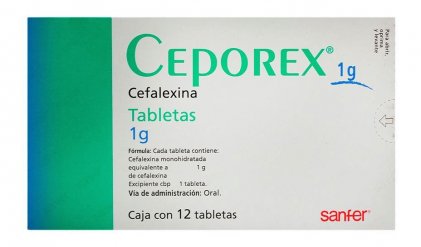Cephalexin: instructions for use
Cephalexin is an antibiotic of the cephalosporin group. Cephalexin is prescribed for various infections: diseases of the respiratory tract, urinary system, hearing organs (in otitis media), bone diseases, sinusitis.
Cephalexin for uti
Urinary tract infections are a common type of bacterial infection. The urinary system includes the urethra, bladder, and kidneys. In UTI, the urethra or bladder can become infected, causing burning when urinating, rapid urination, and other unpleasant symptoms.
Left untreated, UTI can allow bacteria to enter the kidneys and lead to a more serious infection known as pyelonephritis. E. coli is the most common bacteria that causes a UTI, but there are many other types of bacteria that can infect the bladder.
Your doctor will prescribe an effective dose of Cephalexin depending on your age, the severity and type of infection, and your other conditions.
Typical doses for urinary tract infections include:
- Adults: 1-4 g per day, divided into 2-4 doses.
- Children: 25-50 mg per kilogram of body weight per day, divided into 2-4 doses.
Cephalexin: Interactions
Before using Cephalexin, tell your doctor what medications you are taking at the time of treatment. Some drugs should not be taken together with Cephalexin, including:
- Bacteriostatic antibiotics (Chloramphenicol, tetracyclines, Erythromycin): the effectiveness of Cephalexin and the bacteriostatic antibiotic is reduced.
- Aminoglycosides, polymyxins, Capreomycin, Vancomycin, Colistin, loop diuretics (Furosemide, etacrynic acid): increased risk of nephrotoxicity.
- Metformin: increased plasma concentrations of Metformin, possible cumulation.
- Probenecid, phenylbutazone: renal excretion is delayed and half-life of Cephalexin is increased, which contributes to its cumulation, prolonged increase in blood concentration of the drug.
- Non-steroidal anti-inflammatory drugs: slow down excretion of Cephalexin.
- Drugs that reduce platelet aggregation (non-steroidal anti-inflammatory drugs, antiaggregants, vitamin K antagonists (such as Warfarin), Sulfinpyrazone): prolongation of prothrombin time and increased risk of bleeding.
- Hormonal contraceptives: the effectiveness of hormonal contraceptives is reduced, so additional (non-hormonal) contraceptive methods are recommended.
In laboratory diagnostics, consider that Cephalexin antibiotic may cause false-positive glucosuric tests and Coombs reaction. Erroneous results have also been observed in infants whose mothers took Cephalexin during pregnancy. Glucose oxidation reaction-based methods should be used when performing tests during drug administration.
Cephalexin and alcohol
Do not take Cephalexin and alcohol at the same time. Among the main reasons why it is not recommended to drink alcohol while taking antibiotics are two:
- Additional strain on the liver.
- Reduced effectiveness of the treatment.
In fact, during treatment with any medical drugs, it is worth avoiding alcoholic beverages, as they can reduce the therapeutic effect of medication. The reason is the properties of alcohol, which can destroy the drug’s active ingredient or disrupt its effect on bacteria. In addition, alcohol can accelerate or inhibit the elimination of drug components from the body. In the first case, the treatment will be ineffective, in the second – there will be an additional load on the internal organs, and intoxication of the body is possible. The liver is particularly affected, adverse reactions may occur in the kidneys, pancreas, central nervous system, brain, heart and blood vessels.
Liver disorders are associated with the negative impact of alcohol on the synthesis of fatty acids in the cells of the organ and with the blockage of bile ducts. Alcohol, once in the body, is converted to acetaldehyde by the enzyme alcohol dehydrogenase and then to acetic acid by the enzyme acetaldehyde dehydrogenase. Cephalexin pill slows down the breakdown of ethyl alcohol, which causes acetic aldehyde to accumulate in the liver, causing severe intoxication.
For some people, alcohol has a sedative effect, as do certain types of antibiotics with sedative effects, so their combined use can lead to toxic depression of the central nervous system.
All factors are important: age, build, health status, presence of chronic pathologies or allergies in patient. The combination of alcohol and antibiotics can cause:
- headache, dizziness;
- nausea, vomiting;
- sleep disturbances;
- pain in the stomach or intestines;
- body rash;
- heart palpitations, high or low blood pressure;
- anaphylactic shock.
Alcohol also leads to dehydration, and this slows the process of healing and self-healing of the body.
Immediately after the end of the course of antibiotics, alcoholic beverages are not recommended. The medicine tends to accumulate in the body, and it takes time to eliminate it. Such a combination increases the risk of side effects, and also increases the symptoms of alcohol poisoning. It is worth to refrain from drinking alcohol for at least two weeks after the end of treatment.
Treatment: If a patient has nevertheless taken alcohol during treatment with Cephalexin, the following measures should be taken:
- Empty stomach using 2 to 3 liters of fluids (boiled water, saline or soda solution, Rehydration Drink).
- When vomiting occurs, ensure a comfortable position (turn on your side, tilt your head) so that the victim does not choke on the vomit.
- Try to keep the person awake, sitting up.
- Enterosorbents (activated charcoal, Enterosgel, Smecta, Polysorb) should be given to cleanse the body of toxins.
If the patient is unconscious, call an ambulance immediately. Before the doctor arrives, clear the airways, turn on your side, so that the victim will not aspirate vomit as a result of possible vomiting.
Cephalexin for sinus infection
Cephalexin 1000 mg is effective in treating sinusitis and rarely causes serious side effects or allergies. Bacteriological studies have shown that many of the bacteria that cause sinusitis are sensitive to Cephalexin.
Cephalexin for tooth infection
Cephalexin is prescribed for the treatment of dental abscesses and gum diseases. The antibiotic, interferes with the formation of the bacterial cell wall, causing it to break and destroying the infectious agent.
Cephalexin for strep
Cephalexin is characterized by high activity mainly against Gram-positive bacteria (staphylococci, streptococci, pneumococci). Therefore, it is actively used for pharyngitis, pneumonia, wound and skin infections, sepsis, and endocarditis.
Cephalexin vs Amoxicillin
Both antibiotics are prescribed to fight infectious diseases. Which drug is more effective can only be determined by the doctor, after bacteriological analysis. Only by determining the sensitivity of the pathogen to the antibiotic can a positive result of the drug be expected.
|
Name |
Cephalexin |
Amoxicillin |
|
Pharmacological group |
First generation cephalosporin |
Antibiotic of the group of semisynthetic penicillins of broad spectrum |
|
Testimony |
Infections of the upper and lower respiratory tracts (pharyngitis, otitis media, sinusitis, sore throat, bronchitis, acute and exacerbation of chronic pneumonia, bronchopneumonia, empyema and lung abscess). |
Infections of the upper respiratory tract, including ear, nose and throat infections: acute otitis media, acute sinusitis and bacterial pharyngitis; Lower respiratory tract infections: exacerbation of chronic bronchitis, community-acquired pneumonia; lower urinary tract infections: cystitis. |
|
How to take it? |
The drug is prescribed orally, 30-40 minutes before meals, capsules are taken without chewing, with 150-200 ml of water. A dose of 250 mg 4 times a day (every 6 hours) or 500 mg 2 times a day (every 12 hours) is prescribed for adults and children older than 12 years. Duration of treatment 7-14 days. |
Orally, before or after meals. The dose of Amoxicillin depends on the sensitivity of the infectious agent, the severity of the disease and localization of the infectious process. Usually, it is prescribed 250 mg – 500 mg 3 times a day or 500 mg – 1000 mg 2 times a day.
The duration of treatment is 7-14 days. |
|
Contraindications |
Hypersensitivity to cephalosporins, penicillins or other β-lactam antibiotics, as well as to excipients of the drug; Porphyria; infections of the brain or spinal cord; initial therapy of severe generalized infections that require parenteral forms of cephalosporins. |
Infectious mononucleosis, lympholeukosis, severe gastrointestinal infections accompanied by diarrhea or vomiting, respiratory viral infections, allergic diathesis, bronchial asthma, hay fever, hypersensitivity to penicillins or cephalosporins. |
Both Cephalexin and Amoxicillin are usually used off-label, to prevent endocarditis.
Cephalexin: Allergic reaction
An allergy is an immunological reaction to drugs. It occurs when the immune system perceives an antibiotic as a hostile reagent.
This releases antibodies that act on certain cells that contain the inflammatory mediator histamine. When the drug enters the bloodstream, there are symptoms that indicate an allergy to the antibiotic:
- rash;
- angioneurotic edema and bronchospasm;
- anaphylaxis.
Intolerance is a drug sensitivity reaction that has nothing to do with the workings of the immune system. The intolerance depends on the pharmacological action of the medication and the patient’s own perception factors. It can be, for example, a severe form of diarrhea caused by allergy to Cephalexin, which provokes the occurrence of colitis.
Read the instructions for Cephalexin online before use. The information on the website is not official information and is of an informative nature. You can tell if you are allergic to Cephalexin by using special tests.
Сephalexin: Pregnancy
Cephalexin during pregnancy and lactation is prescribed only by a physician after assessing all the risks to the health of the mother and fetus. If it is necessary to prescribe the drug during lactation, breastfeeding should be stopped.
Cephalexin: Kidney infection
Cephalexin can be used to treat mild pyelonephritis, a kidney infection. More severe kidney infections will require intravenous antibiotics. Antibiotics are available with a doctor’s prescription, so Cephalexin otc is not available at the pharmacy. If you forget to get a prescription from your doctor, then you can use our pharmacy service. We have a qualified doctor on staff, and you will be able to purchase Cephalexin over the counter. The cost of the drug includes the price of the prescription as well.
read more



